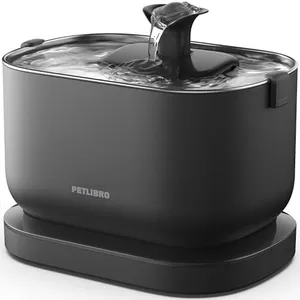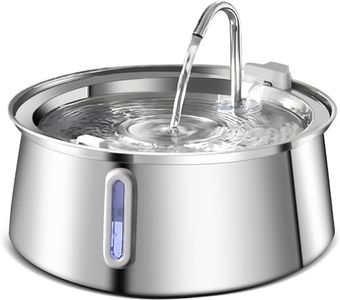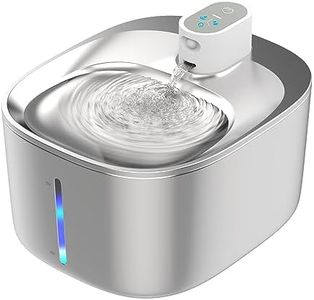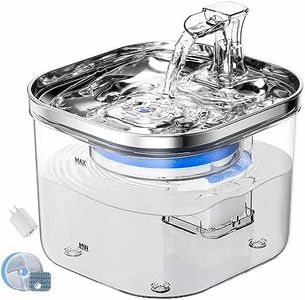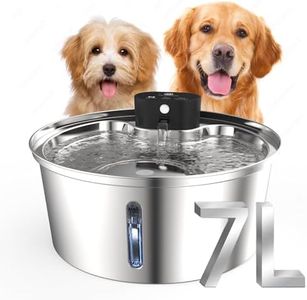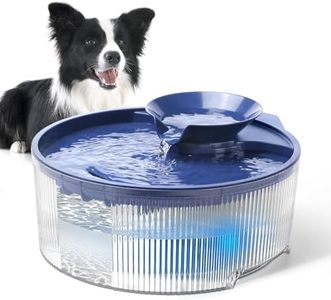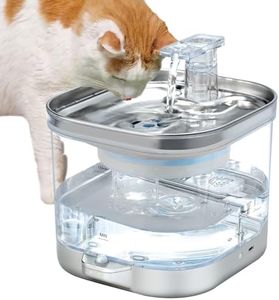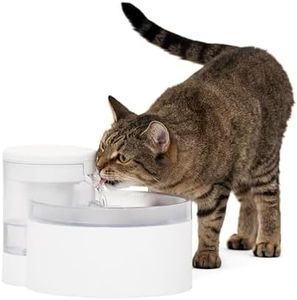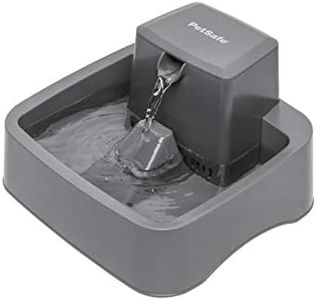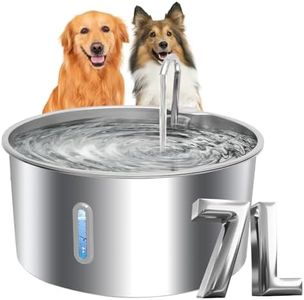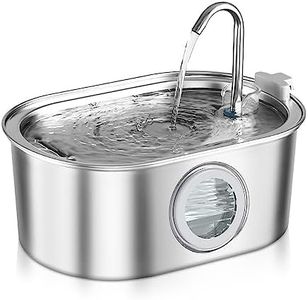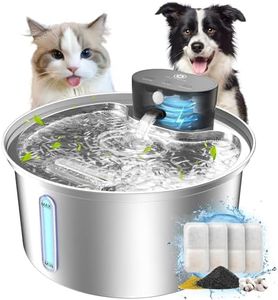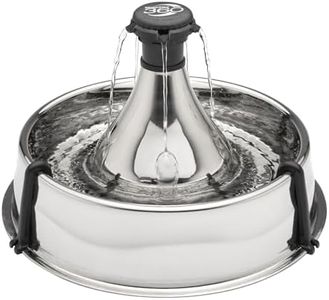We Use CookiesWe use cookies to enhance the security, performance,
functionality and for analytical and promotional activities. By continuing to browse this site you
are agreeing to our privacy policy
10 Best Dog Water Fountains
From leading brands and best sellers available on the web.Buying Guide for the Best Dog Water Fountains
Choosing the right dog water fountain can make a significant difference in your pet’s hydration, health, and comfort. A good fountain encourages your dog to drink more water by keeping it fresh and appealing, and it can even make your life easier by reducing the frequency of refills and cleaning. When shopping for a dog water fountain, it’s important to look beyond aesthetics and focus on features that suit your dog’s size, habits, and your own convenience. Here are the key specifications you should pay attention to and how to interpret them according to your needs.CapacityCapacity refers to how much water the fountain can hold at one time. This is important because it determines how often you need to refill the fountain and whether it will be suitable for your dog’s size or multiple pets. For small dogs or single-pet households, a smaller capacity (around 1-1.5 liters) may be sufficient and easier to manage. For larger dogs, multiple dogs, or if you’re away from home regularly, a bigger capacity (2 liters or more) can ensure your pets always have enough water. Think about your dog’s drinking habits and your schedule to pick the right size—if your pet drinks a lot or you travel often, go for a larger capacity.
Filtration SystemThe filtration system refers to how the fountain keeps your dog’s water clean by removing hair, debris, and sometimes odors or tastes. This is important for your pet’s health and can also make water more appealing so your dog drinks more. Basic models use a simple mesh filter, while more advanced ones may have multi-stage filters with charcoal or carbon. If your dog is sensitive to tastes or you have multiple pets, look for more advanced filters. Remember: filters require replacement, so consider how easy and affordable it is to maintain the system.
MaterialDog water fountains are usually made from plastic, stainless steel, or ceramic. Material is important for durability, cleanliness, and your pet’s health. Plastic fountains are lightweight and affordable, but can develop scratches where bacteria can build up. Stainless steel is durable, hygienic, and less likely to hold bacteria, making it ideal for pets with sensitivities. Ceramic looks attractive and resists bacteria well, but is heavier and can break more easily. Choose plastic for portability and basic needs, steel for allergic or sensitive pets, and ceramic if you want something sturdy for indoor use.
Noise LevelThe noise level refers to how much sound the fountain's pump or water flow makes. This is important for sensitive pets and for placement in quiet home areas. Some fountains have loud pumps or splashing sounds that can startle shy dogs or bother you at night. Quiet models have submersible pumps or gentle water flows. If your dog is nervous or you plan to put the fountain near where you relax or sleep, opt for a quieter fountain.
Ease of CleaningEase of cleaning describes how simple it is to take apart, wash, and reassemble the fountain. This is important because regular cleaning prevents bacteria and keeps water safe and tasty. Fountains with simpler designs, fewer parts, and dishwasher-safe components save you time and trouble. Complex shapes or small crevices can be hard to clean, leading to hygiene problems. If you’re busy or dislike cleaning chores, choose a straightforward, easy-to-clean design.
Water Flow OptionsWater flow options determine how the water moves—whether it’s a steady stream, bubbling, or waterfall. This can affect how attractive the water is to your dog and how much noise the fountain makes. Some fountains allow you to adjust the flow for shy or playful pets. If your dog likes running water or gets bored easily, a fountain with adjustable stream or bubbles might be best. For nervous pets who might be scared by moving water, choose a gentle, quiet flow.
Power SourceMost dog water fountains are powered by electricity (plug-in), though some use batteries or have manual options. Power source matters for placement—electric models need to be near an outlet, while battery-operated ones offer flexibility but need regular battery changes. If you want to place the fountain outdoors or move it between rooms, or if power outages are a concern in your area, consider battery options. For hassle-free home use, plug-in models are generally more reliable.
